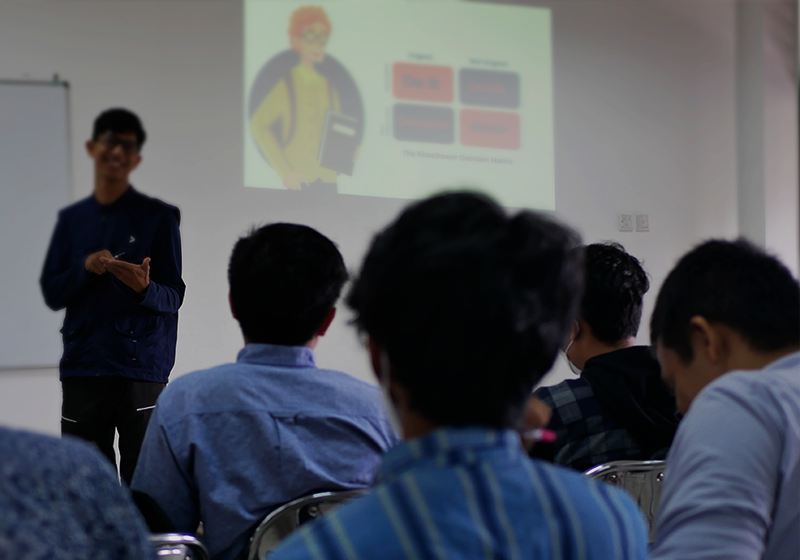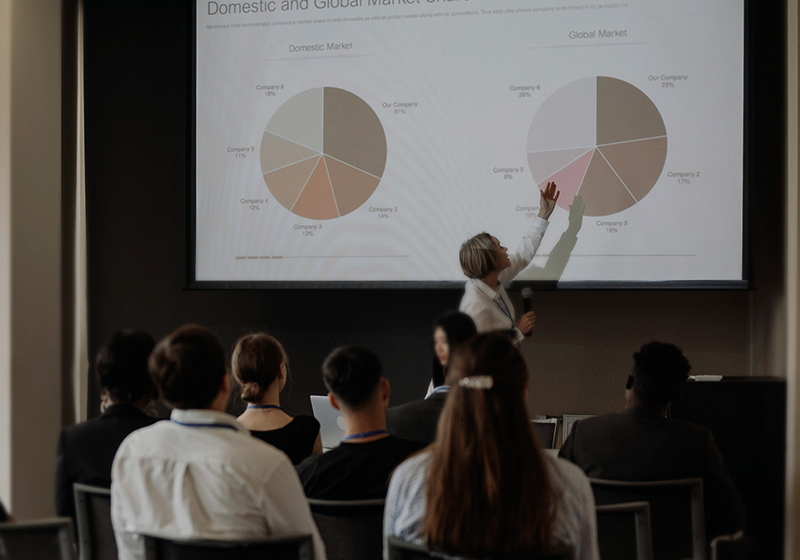 Titulo: Interacting Edge-Reinforced Random Walks
Titulo: Interacting Edge-Reinforced Random Walks
Palestrante: Guilherme Reis (Technical University of Munich)
Data: 04/09/2023
Horário: 3:30 p.m. to 4:30 p.m.
Sala: C116 - Bloco C - CT – Instituto de Matemática – UFRJ. There will be no transmission online.
Resumo: Recall that in the simple Random Walk (RW) on Z the walker, starting at 0, just jumps either to the right or to the left with the same probability. It is a classical result that the simple RW on Z is recurrent. In the Edge-Reinforced Random Walk (ERRW) the walker keeps track of the edges already visited and gives extra bias to the edges mostly visited. We would expect that the behavior of the ERRW depends on the strength of the extra bias we decide to give to the edges. The ERRW is a non-markovian process introduced by Diaconis and the first results about it goes back to Davis in 1990. Davis showed, under some assumptions, that the ERRW on Z is either recurrent or it localizes in a single edge with probability 1. What would happen if instead of a single ERRW we consider two or more walkers reinforcing the edges of Z? In an ongoing project, together with Nina Gantert (TUM) and Fabian Michel (TUM), we plan to answer the above question.
More complete information about the seminars can be found at clicking HERE.
Sincerely,
Organizers: Giulio Iacobelli e Maria Eulalia Vares
 Títle: Minimal distance between random orbits
Títle: Minimal distance between random orbits
Palestrante: Manuel Stadlbauer (IM-UFRJ)
Data: 21/08/2023
Horário: 15:30 às 16:30h
Local: C116 - Bloco C - CT – Instituto de Matemática – UFRJ.
Resumo: It is known for expanding dynamical systems and finite state Markov chains that the asymptotic behaviour of the minimal distance between two orbits up to time n is given by its correlation dimension.
In this talk, we will discuss this problem in a randomized setting with not necessarily expanding fibres. If the fibres and the basis of the random system
under consideration are sufficiently mixing, then a similar but more complex result holds: there are two relevant dimensions and, depending on the stochastic process in the
basis, either one or the other is dominant. In particular, there is a phase transition, which is unknown in the framework of a classical dynamical system.
Informações mais completas sobre os seminários estão disponíveis AQUI.
Sincerely,
Organizers: Giulio Iacobelli e Maria Eulalia Vares
 Título: Survival of Renewal Contact Process
Título: Survival of Renewal Contact Process
Palestrante:Rafael Souza dos Santos (IM-UFRJ)
Data: 14/08/2023
Horário: 15:30 às 16:30h
Local: C116 - Bloco C - CT – Instituto de Matemática – UFRJ.
Resumo: The renewal contact process, introduced in 2019 by Fontes, Marchetti, Mountford, and Vares, extends the Harris contact process by allowing the possible cure times to be determined according to independent renewal processes (with some interarrival distribution mu) and keeping the transmission times determined according to independent exponential times with a fixed rate lambda. In this talk we will discuss conditions on mu to have a positive and finite critical parameter in the renewal contact process. Joint work with Maria Eulalia Vares.
Informações mais completas sobre os seminários estão disponíveis AQUI.
 Título: A Lower bound for set-colouring Ramsey numbers
Título: A Lower bound for set-colouring Ramsey numbers
Palestrante:Taísa Lopes Martins (IME-UFF)
Data: 19/06/2023
Horário: 15:30 às 16:30h
Local: C116 - Bloco C - CT – Instituto de Matemática – UFRJ.
Resumo: The set-colouring Ramsey number Rr,s(k) is defined to be the minimum n such that if each edge of the complete graph Kn is assigned a set of s colours from {1, . . . , r}, then one of the colours contains a monochromatic clique of size k. The case s = 1 is the usual r-colour Ramsey number, and the case s = r − 1 was studied by Erdős, Hajnal and Rado in 1965, and by Erdős and Szemerédi in 1972.
The first significant results for general s were obtained only recently, by Conlon, Fox, He, Mubayi, Suk and Verstraëte, who showed that Rr,s(k) = 2^{Θ(kr)} if s/r is bounded away from 0 and 1. In the range s = r − o(r), however, their upper and lower bounds diverge significantly. In this talk we introduce a new (random) colouring, and use it to determine Rr,s(k) up to polylogarithmic factors in the exponent for essentially all r, s and k.
This is a joint work with Lucas Aragão, Maurício Collares, João Pedro Marciano and Rob Morris.
Informações mais completas sobre os seminários estão disponíveis AQUI.
 Título: "Oriented Percolation Models: Further improvement for the critical probability on regular trees"
Título: "Oriented Percolation Models: Further improvement for the critical probability on regular trees"
Palestrante: Zoraida Fernandez Rico (Columbia)
Data: 24/04/2023
Horário: 15:00h
Local: Transmissão Online
Acesse a transmissão AQUI.
Resumo: We present an estimator of the covariance matrix of a random d-dimensional vector from an i.i.d. finite sample. Our only assumption is that this vector satisfies a bounded L^p-L^2 marginal moment for p greater or equal than 4, and we allow an adversary to modify arbitrary a fraction of the sample. Given this, we show that the covariance can be estimated with the same high-probability error rates that the sample covariance matrix achieves in the case of Gaussian data. This talk is based on a joint work with Roberto I. Oliveira (IMPA).
Todas as palestras são realizadas em Inglês.
Mais informações completas sobre os seminários estão disponíveis AQUI.
